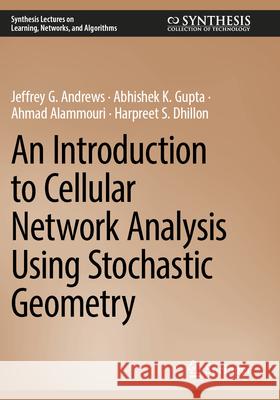An Introduction to Cellular Network Analysis Using Stochastic Geometry » książka
topmenu
An Introduction to Cellular Network Analysis Using Stochastic Geometry
ISBN-13: 9783031354922 / Angielski
An Introduction to Cellular Network Analysis Using Stochastic Geometry
ISBN-13: 9783031354922 / Angielski
cena 154,18 zł
(netto: 146,84 VAT: 5%)
Najniższa cena z 30 dni: 153,11 zł
(netto: 146,84 VAT: 5%)
Najniższa cena z 30 dni: 153,11 zł
Termin realizacji zamówienia:
ok. 20 dni roboczych.
ok. 20 dni roboczych.
Darmowa dostawa!
Kategorie:
Kategorie BISAC:
Wydawca:
Springer
Seria wydawnicza:
Język:
Angielski
ISBN-13:
9783031354922











